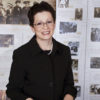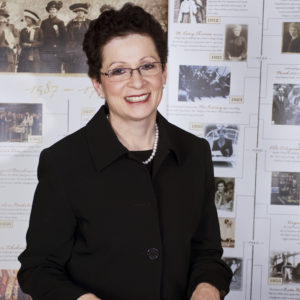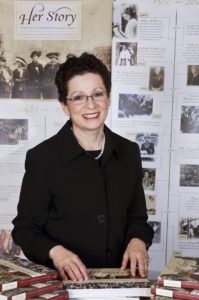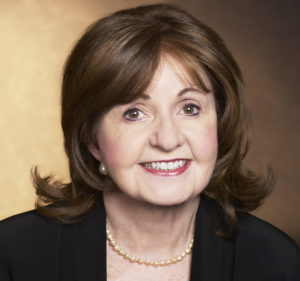What We Wouldn’t Have Without Women



Jill S. Tietjen, PE, is an author, national speaker, and…
The statement of a friend triggered the thought – what wouldn’t we have without women? We wouldn’t have iPhones, United Way, tuberculosis tests, the drug to effectively treat childhood leukemia, the Apgar score, fruits and vegetables from California, Kevlar, affordable ice cream, commercial maternity clothes, Real D/3D for 3D movies, and much more. In this month’s column, we focus on those parts of our lives that we take for granted today that we wouldn’t have without women.

The inventor of the first commercially successful dishwasher, Josephine Cochran (later Cochrane) wanted to avoid the tedium of dishwashing and chipped dishes. Legend has it that she ran through the streets saying “If nobody is going to invent a dishwashing machine, I’ll do it myself!” The Cochrane dishwashers were popular and the Garis-Cochran Manufacturing Company was established in 1897 to make them. Earlier efforts (by others) at inventing a dishwashing had been unsuccessful. Hers was the first to use water pressure instead of scrubbers to clean the dishes. Initial customers were primarily restaurants and hotels. Most U.S. homes didn’t have dishwashers until the 1950s, when plumbing became adequate to handle them. Cochran was inducted into the National Inventors Hall of Fame in 2006.

Our milk is pasteurized today due to the groundbreaking work of bacteriologist Alice Catherine Evans. She discovered that the brucellae bacteria was the cause of undulant fever in humans, which was contracted from farm animals and their milk. Evans studied bacteriology at Cornell University and the University of Wisconsin, accepting a research position in the University’s Dairy Division instead of pursuing her Ph.D. By 1917, Evans had discovered that bacteria from raw cow’s milk was responsible for undulant fever. When she presented her results to the Society of American Bacteriologists, she was met with skepticism; this was probably due in large part to her gender. After 1918 when she joined the U.S. Public Health Service, she was unable to continue her milk studies but studies around the world confirmed her findings. She advocated for pasteurization for years; that occurred in the 1930s. In 1928, Evans was elected the first female president of the American Society of Bacteriologists. She has been inducted into the National Women’s Hall of Fame.

In earlier times, scarlet fever was a feared disease; it killed 25% of the children who got it, and many had severe and crippling complications. Gladys Dick and her husband successfully isolated the bacteria that caused it, developed a test to determine who was vulnerable to the disease and devised ways to prevent the disease. Dick and her husband patented the way their scarlet fever toxin and antitoxin were prepared, in order to preserve its purity. Dick wanted to study medicine but had to overcome the objections of her mother, who thought such learning was not appropriate for young women. After graduating in 1900 from the University of Nebraska, Dick taught biology at a high school until her mother relented and she graduated from the Johns Hopkins University School of Medicine in 1907. In 1923, the Dicks published papers proving that scarlet fever was caused by the hemolytic streptococcus. They announced the Dick test in 1924 which showed whether a person was susceptible or immune to scarlet fever. Their toxin and antitoxin were ‘state-of-the-art’ until antibiotics were discovered during World War II.

Ruth Patrick pursued a career in limnology (the study of lakes and other bodies of fresh water) due in large part to the encouragement she received from her father. He said “Don’t cook, don’t sew; you can hire people to do that” and gave her a microscope when she was seven years old. Even so, she had to overcome hurdles on the way to a stellar career. In 1933, she joined the Academy of Natural Sciences in Philadelphia as a volunteer as at that time women scientists were not paid! To earn money, she taught at the Pennsylvania School of Horticulture and worked in the laboratory at Temple University. Finally, she began being paid in 1937. Patrick’s specialty was diatoms – single-celled algae that are indicators of the type and severity of water pollution. She invented the diatometer, a plastic box containing microscopic slides that collected organisms from the water. The author of more than 200 scientific articles, Patrick was the first woman and first environmentalist to sit on the DuPont Company’s board of directors. She was elected to the National Academy of Sciences and received the National Medal of Science. Patrick has been inducted into the National Women’s Hall of Fame.

A professor of animal science at Colorado State University, Temple Grandin is an expert on animal behavior. She is also a spokesperson for autism. Half of the cattle in the U.S. are handled in facilities that she designed. Animals in Canada, Mexico, Europe, Australia and New Zealand are also housed in Grandin-designed facilities. On the advice of her high school science teacher, Grandin developed her ‘hug box’ or ‘squeeze machine’ to provide herself with stress relief. It was later adapted for use with animals. Grandin did not speak until she was three and a half years old but was able to be mainstreamed by the time she was in kindergarten. Her first book, Emergence: Labeled Autistic, was the first inside narrative written about autism. She was also one of the first adults to disclose that she was autistic, thus publicizing the condition. In 2010, Time magazine named her one of the 100 most influential people in the “Heroes” category and her life story was told in an HBO movie. Grandin has been inducted into the National Women’s Hall of Fame.
Women participate and contribute to every area of our lives and we are often unaware of the benefits we enjoy because of the contributions and accomplishments of women like those profiled above. These women and many others, almost all of whom we have not heard about nor learned about in school, across all fields of endeavor, are profiled in our book, Her Story: A Timeline of the Women Who Changed America. Help us by continuing to tell women’s stories. Write women back into history!
 Jill S. Tietjen, PE, is an author, national speaker, and an electrical engineer. After 40 years in the electric utility industry, her professional focus is now on women’s advocacy, worldwide. She blogs for The Huffington Post, speaks nationally on the accomplishments of women, nominates women for awards, and continues to write books (8 published to date), following in the footsteps of her bestselling and award-winning book, Her Story: A Timeline of the Women Who Changed America (written with Charlotte Waisman). She is a frequent keynote speaker as her positive energy and her ability to relate to the audience result in inspired and energized listeners. The recipient of many awards, her induction into the Colorado Women’s Hall of Fame in 2010 remains one of her most treasured.
Jill S. Tietjen, PE, is an author, national speaker, and an electrical engineer. After 40 years in the electric utility industry, her professional focus is now on women’s advocacy, worldwide. She blogs for The Huffington Post, speaks nationally on the accomplishments of women, nominates women for awards, and continues to write books (8 published to date), following in the footsteps of her bestselling and award-winning book, Her Story: A Timeline of the Women Who Changed America (written with Charlotte Waisman). She is a frequent keynote speaker as her positive energy and her ability to relate to the audience result in inspired and energized listeners. The recipient of many awards, her induction into the Colorado Women’s Hall of Fame in 2010 remains one of her most treasured.
 Charlotte S. Waisman, Ph.D. is a national champion and advocate for women as a professor and keynote speaker. A corporate leader, executive coach, and facilitator, she conducts leadership workshops nationally.
Charlotte S. Waisman, Ph.D. is a national champion and advocate for women as a professor and keynote speaker. A corporate leader, executive coach, and facilitator, she conducts leadership workshops nationally.
Author: Jill Tietjen
Jill S. Tietjen, PE, is an author, national speaker, and an electrical engineer. After 40 years in the electric utility industry, her professional focus is now on women’s advocacy, worldwide. She blogs for The Huffington Post, speaks nationally on the accomplishments of women, nominates women for awards, and continues to write books (8 published to date), following in the footsteps of her bestselling and award-winning book, Her Story: A Timeline of the Women Who Changed America (written with Charlotte Waisman). She is a frequent keynote speaker as her positive energy and her ability to relate to the audience result in inspired and energized listeners. The recipient of many awards, her induction into the Colorado Women’s Hall of Fame in 2010 remains one of her most treasured.

Jill S. Tietjen, PE, is an author, national speaker, and an electrical engineer. After 40 years in the electric utility industry, her professional focus is now on women’s advocacy, worldwide. She blogs for The Huffington Post, speaks nationally on the accomplishments of women, nominates women for awards, and continues to write books (8 published to date), following in the footsteps of her bestselling and award-winning book, Her Story: A Timeline of the Women Who Changed America (written with Charlotte Waisman). She is a frequent keynote speaker as her positive energy and her ability to relate to the audience result in inspired and energized listeners. The recipient of many awards, her induction into the Colorado Women’s Hall of Fame in 2010 remains one of her most treasured.


